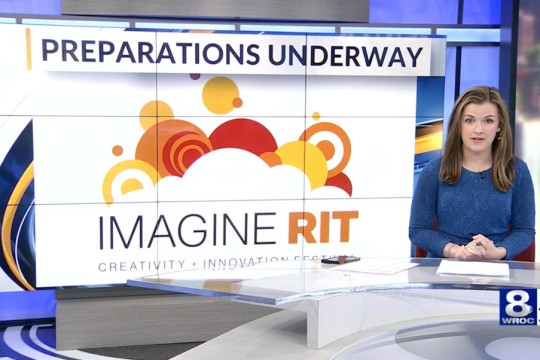RIT Awarded $2.7 Million for Automotive Fuel-Cell Research
The U.S. Department of Energy has awarded Rochester Institute of Technology $2.7 million to explore improving automotive fuel-cell performance.
Satish Kandlikar, the James E. Gleason Professor of Mechanical Engineering in RIT’s Kate Gleason College of Engineering, is the principal investigator for the project, Visualization of Fuel Cell Water Transport and Performance Characterization. Collaborators include Navalgund Rao, associate professor in RIT’s Center for Imaging Science; Jeffrey Allen, assistant professor of mechanical engineering-engineering mechanics at Michigan Technological University; and Thomas Trabold, senior research engineer with General Motors Corp. Fuel Cell Development Center in Honeoye Falls.
Using advanced diagnostic methods and fuel cells with visual access, researchers will seek to enhance automotive fuel-cell performance by exploring water transport and accumulation, leading to the development of methods to minimize water accumulation and freeze damage that result in degraded performance and material durability.
“Developing alternative energy sources requires the latest technological tools to overcome complex scientific and engineering challenges,” says Kandlikar. “We hope our efforts will contribute in advancing automotive hydrogen fuel-cell technology and allow the United States to gain leadership in the world market.”
Fuel cells use hydrogen and oxygen to create electricity, with only water and heat as byproducts. They can power portable devices, provide heat and electricity to buildings, and power vehicles with up to three times the efficiency of internal combustion technologies, according to the U.S. Energy Department.
The three-year project, beginning Jan. 1, 2007, will also involve co-op, master’s degree and doctoral students. It is among $100 million in hydrogen research and development projects announced this week by the U.S. Energy Department supporting President Bush’s Advanced Energy Initiative.
“I am especially pleased and proud that RIT has received this grant, not only because it addresses an area of critical importance to the nation but also because it was earned through rigorous peer review,” says Harvey Palmer, dean of RIT’s Kate Gleason College of Engineering.
Adds Albert Simone, RIT president: “This grant represents an excellent example of a higher education-industry collaboration, demonstrating that universities are not only strong partners in, but also drivers of today’s economy. It is great news for RIT, the Greater Rochester region and New York state as a whole.”
The grant was announced by U.S. Rep. John R. “Randy” Kuhl Jr. (R-Hammondsport). “The groundbreaking work that RIT and GM are doing in alternative fuels right here in our backyard is impressive and vital to our nation’s energy independence,” Kuhl says.
Adds U.S. Energy Secretary Samuel Bodman: “RIT can play an important role in the future of how we power our homes and cars. It’s possible that hydrogen may be the key to weaning our nation off of petroleum and thereby reducing our reliance on foreign nations for our energy. The work that is being done at RIT and around the country brings promise of a more energy-secure future for America.”
Note: U.S. Department of Energy announcement: http://www.energy.gov/news/4401.htm
RIT’s Kate Gleason College of Engineering is among the nation’s top-ranked engineering colleges. The college offers undergraduate and graduate degrees in applied statistics, engineering science, and computer, electrical, industrial and systems, mechanical, and microelectronic engineering and a doctoral degree in microsystems engineering. Founded in 1829, RIT enrolls 15,500 students in more than 340 undergraduate and graduate programs.














